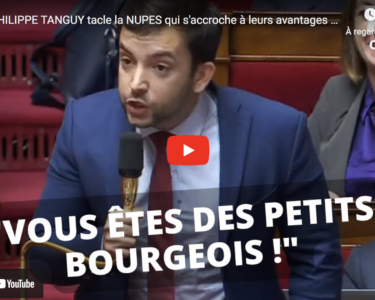Un peu d’histoire pourrait permettre de remettre les idées en place s’agissant de cette péninsule disputée depuis deux siècles dont le nom vient de l’expression tatare « Qirim » qui signifie « ma colline ».
En 1783, le Khanat de Crimée, protectorat ottoman, est occupé par la Russie en 1783. Cet État s’étend au-delà de la péninsule criméenne dans les régions adjacentes de l’Ukraine continentale.
En 1802, la Russie annexe officiellement le Khanat sous le nom de Gouvernorat de Tauride (nom antique de cette région) qui s’étend sur 63 500 km2.
En 1862, lors du premier recensement fiable, la population de la Tauride est à 39,7% ukrainienne, 27,2% russe et 10,6% tatare.
En 1897, la population totale de la Tauride est à 42,2% ukrainienne, 27,9% russe et 13,6% tatare. La population de la péninsule (Crimée proprement dite) est à 35,6% tatare, 33,1% russe et 11,8% ukrainienne.
En novembre 1917, la République populaire de Crimée est proclamée, dirigée par Tchélébidjikhan, un Tatar. Elle ne comprend plus que la péninsule soit 27 200 km2.
En janvier 1918, les bolchéviks instaurent la République socialiste soviétique de Tauride, dont le gouvernement ne comprend aucun Tatar.
En avril 1918, les Ukrainiens et les troupes allemandes envahissent la Crimée, qui devient ukrainienne.
En juin 1918, le Gouvernement régional criméen est constitué. Hostile au régime bolchévik de Moscou, il est de facto indépendant. Il est dirigé d’abord par Sulkievitch, un Tatar, puis par un juif karaïte, Solomon Krym.
En avril 1919, l’Armée rouge intervient et proclame la République socialiste soviétique criméenne, liée à la Russie communiste mais formellement indépendante.
En juin 1919, le Crimée est reprise par l’Armée blanche russe de Dénikine et Wrangel et n’a plus aucune autonomie.
En novembre 1920, la Crimée est reprise par l’Armée rouge. Elle est gouvernée par un Comité révolutionnaire sous l’autorité de Moscou.
En octobre 1921, est proclamée la République socialiste soviétique autonome criméenne au sein de la Russie soviétique.
En septembre 1942. La Crimée est conquise par les Allemands.
En mai 1944, la Crimée est définitivement reprise par les soviétiques.
En mai 1944, la totalité de la population tatare de Crimée est déportée en Asie centrale et 46% de la population meurt durant le transfert. Depuis 1991, des Tatars se réinstallent.
En juin 1945, la République socialiste soviétique autonome criméenne est abolie et transformée en Province (oblast) de Crimée au sein de la Russie.
En février 1954, la Province devient ukrainienne, par décret du Présidium soviétique.
En janvier 1991, suite au référendum pour la restauration de la République socialiste soviétique autonome criméenne qui donne 94% de oui, cette République est proclamée.
En décembre 1991, un référendum approuve l’indépendance de l’Ukraine. En Crimée, ce référendum donne 54% de suffrages favorables à cette indépendance.
En février 1992, la Crimée devient une République autonome au sein de l’Ukraine indépendante.
En décembre 1994, un mémorandum est signé à Budapest par la Russie, les USA et la Grande-Bretagne au sujet de l’indépendance ukrainienne. “La Fédération de Russie, le Royaume-Uni et les États-Unis réaffirment leur obligation de s’abstenir de toute menace ou de l’emploi de la force contre l’intégrité territoriale ou l’indépendance de l’Ukraine, et qu’aucune de leurs armes ne sera jamais utilisée contre l’Ukraine, sauf en cas de légitime défense ou en conformité avec la Charte des Nations unies”, stipule le document. En échange de cette garantie sur ses frontières, l’Ukraine donne ses ogives nucléaires à la Russie, se privant ainsi de sa seule capacité de dissuasion envers le « grand frère slave ».
En 2001, dernier recensement en date, la Crimée comprend 58,1% de russes, 24,3% d’ukrainiens et 12,1% de tatars.
Cette chronologie précise permet de mettre à bas la propagande russe de ces derniers mois qui répète ad nauseam que la Crimée a toujours été ethniquement russe et qu’elle avait toujours appartenu à l’État russe avant 1954. Le plus stupéfiant, c’est que les médias français, y compris ceux hostiles à Poutine, gobent tout cela sans esprit critique.
D’abord ne jouons pas sur les mots. Si, avant 1918, la Crimée était russe, c’est qu’il n’y avait pas d’Ukraine, ni d’ailleurs de Pologne ou de Biélorussie, mais seulement l’Empire russe.
D’autre part, les recensements mentionnés montrent qu’avant l’expulsion de 1944, les Russes ne formaient qu’un tiers de la population et que les Tatars avaient la majorité relative. La russification est donc récente et elle est le fruit d’une épuration ethnique.
Enfin, à partir de 1918, lors de l’effondrement du tsarisme et de la guerre civile, la Crimée passe par des phases d’indépendance en tant qu’État tatar, d’appartenance à l’Ukraine puis d’intégration à la Russie soviétique. Dire qu’elle avait toujours été russe avant 1954 est un abus de language et… de géopolitique.





79 Comments
Comments are closed.